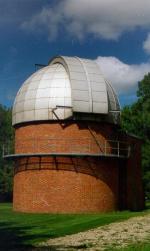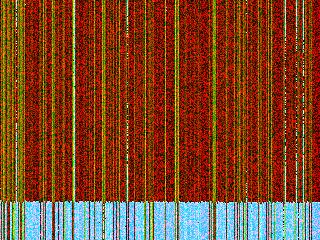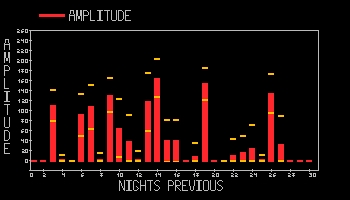| Warner and Swasey Observatory |
| Case Western Reserve University | Nassau Station |
| Visitors |
|
» Home » News » Gallery » Reference » Weather |
| Science Resources |
|
» NSRT User Interface » Software » Data Archive » Download Data |

|
 |
CWRU Nassau Station Robotic Telescope
Polaris Monitor Status
|
The Polaris Monitor is a camera that points towards the north celestial pole to monitor the pole star Polaris for the purpose of determining if it is overcast at the telescope site. Since the star Polaris is near the celestial north pole it does not move very far from one spot as the Earth turns so the camera can be fixed and does not need to track Polaris across the sky. The way it works is if we see Polaris, we know it is not cloudy.
The above image on the left is created by stacking all of the images for the Polaris Monitor from a night. The result is star trails forming partial circles about the north celestial pole. Gaps in the trail can occur when clouds pass through the field of view.
The image on the right is a graph of the mean amplitude observed for Polaris for the last 30 nights. On the x-axis, one is last night, two is two nights ago, etc.
The Polaris Monitor considers the sky clear if it detects the brightness of Polaris to be 1/4 its peak value or greater (peak value is about 200,000 counts). So it is possible for the monitor to detect Polaris but not declare the sky clear. This situation can be caused by fog or thin clouds.
The FWHM is the full width at half maximum of the Polaris profile. The larger the value the poorer the conditions. The best value observed is about 2.0 and represents the focusing ability of the camera lens (about 20 microns).
During the day time the image displayed is from the previous night. Check back at night here to watch the image update every five minutes as the Polaris Monitor operates.
See the Current Polaris Monitor Status
A Transparency Forcast for the NSRT

Return to the Nassau Station Homepage
Return to the NSRT online interface
Questions, comments, or inquiries about the Case Western Reserve Nassau Station Robotic Telescope can be e-mailed to robotmail@grendel.cwru.edu

